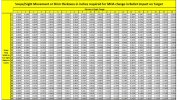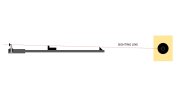Dimner
Named Man
I gang. I have a Type 99 Arisaka that I'm going to have a receiver sight added on (Lyman SME).
I'm trying to figure out if the original military front sight will work with the new receiver sight, or if I need to get a new one. I know there is a formula on how to calculate sight height based off of how much you want your POI to move up and down. Is there a formula that takes in account moving one of the sights backward or forward?
My end goal here is to, if necessary, hand off my rifle to the smith with any necessary front sight parts that I want installed. I really don't want to have the Lyman SME installed just to find out I need another trip to the gunsmith to get the front sight removed and then a ramp installed with the appropriate bead height. I'd much rather try to get all the work done at the same time.
I'm trying to figure out if the original military front sight will work with the new receiver sight, or if I need to get a new one. I know there is a formula on how to calculate sight height based off of how much you want your POI to move up and down. Is there a formula that takes in account moving one of the sights backward or forward?
My end goal here is to, if necessary, hand off my rifle to the smith with any necessary front sight parts that I want installed. I really don't want to have the Lyman SME installed just to find out I need another trip to the gunsmith to get the front sight removed and then a ramp installed with the appropriate bead height. I'd much rather try to get all the work done at the same time.


